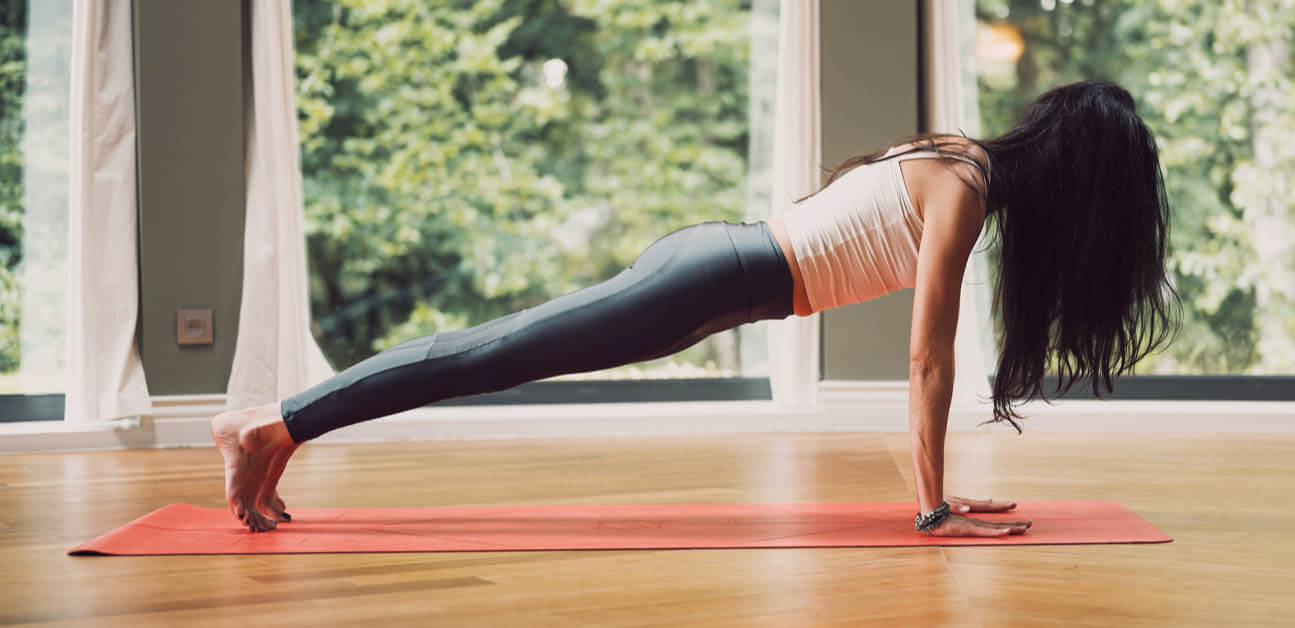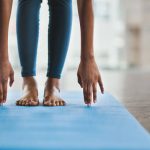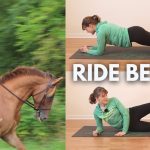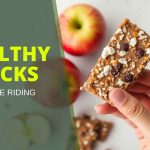Having a strong core is essential for good riding posture. It helps you stay balanced and in control.
In this post, we’ll explore how core exercises can improve your riding posture. A solid core is the foundation of every rider’s strength and stability. Whether you ride horses, bikes, or motorcycles, a strong core helps you maintain the right posture, reducing the risk of injury and enhancing your overall performance.
Good posture is crucial because it allows for better control, endurance, and comfort while riding. Engaging in core exercises not only strengthens your abdominal muscles but also supports your back and improves your flexibility. This means you’ll be able to ride longer and with less fatigue. So, let’s dive into the world of core exercises and discover how they can benefit your riding experience.
Benefits Of A Strong Riding Posture
A strong riding posture can greatly improve your overall riding experience. It helps you maintain balance, reduces fatigue, and keeps you safe. Let’s explore some of the key benefits in detail.
Enhanced Stability
Enhanced stability is a key benefit of a strong riding posture. With a firm core, you can keep your body steady and balanced. This stability is vital, especially when riding on uneven terrains or taking sharp turns.
- Better Balance: A strong core helps you stay upright.
- Control: You can handle your bike more effectively.
- Safety: Reduced risk of falls and injuries.
This stability ensures you can enjoy a smoother, safer ride. It also allows you to tackle more challenging routes with confidence.
Reduced Fatigue
Reduced fatigue is another major benefit of a strong riding posture. When your core muscles are strong, they support your body more efficiently. This means your body doesn’t tire as quickly, allowing you to ride longer and more comfortably.
| Benefit | Description |
|---|---|
| Endurance | You can ride for longer periods without feeling exhausted. |
| Comfort | Less strain on your back and shoulders. |
| Recovery | Your body recovers faster after each ride. |
By reducing fatigue, you can enjoy your rides more and improve your overall performance.
Key Muscles For Riding
Riding a bike or a horse with good posture requires strong muscles. These muscles help maintain balance and prevent injuries. Understanding which muscles to focus on can improve your riding experience. Let’s explore the key muscles for riding.
Core Muscles
The core muscles include the abs and obliques. They stabilize the body during rides. Strong core muscles help maintain balance. They also support the spine, reducing the risk of back pain.
Lower Back
The lower back muscles support the upper body. They help maintain a proper riding posture. Weak lower back muscles can lead to slouching. This can cause discomfort and affect your riding performance.
Legs And Glutes
Strong legs and glutes are essential for riding. They provide power and stability. The quads, hamstrings, and calves all play a role. Together, they help control movement and maintain balance. Well-developed glutes support the lower back and improve posture.
Plank Variations For Core Strength
Improving your riding posture requires a strong core. Plank exercises are perfect for this. They target multiple muscle groups and are easy to modify. Let’s explore some plank variations that can help build core strength.
Forearm Plank
The forearm plank is a basic yet effective exercise. Start by lying face down. Place your forearms on the ground. Your elbows should be directly under your shoulders. Lift your body off the ground. Keep your back straight. Hold this position for 30 seconds. Increase the time as your strength improves.
Side Plank
The side plank targets the obliques. Lie on your side. Place one forearm on the ground. Stack your feet on top of each other. Lift your hips until your body forms a straight line. Hold for 30 seconds. Switch sides and repeat.
Plank With Leg Lift
This variation adds a challenge. Start in a forearm plank position. Lift one leg off the ground. Keep it straight. Hold for a few seconds. Lower it back down. Repeat with the other leg. Aim for 10 lifts per leg.
| Plank Variation | Primary Muscles Worked | Recommended Duration |
|---|---|---|
| Forearm Plank | Core, Shoulders | 30 seconds to 1 minute |
| Side Plank | Obliques, Core | 30 seconds per side |
| Plank with Leg Lift | Core, Glutes | 10 lifts per leg |
Incorporate these plank variations into your routine. They will help improve your riding posture. Start with shorter durations. Gradually increase the time as you get stronger.

Credit: www.trainerroad.com
Abdominal Exercises
Riders need strong abdominal muscles. These muscles support the spine and maintain balance. They help riders stay upright and in control. Incorporating abdominal exercises into your routine can improve your riding posture. This section covers three effective exercises: Bicycle Crunches, Russian Twists, and Leg Raises.
Bicycle Crunches
Bicycle crunches target the abs and obliques. Lie on your back. Place your hands behind your head. Lift your legs off the ground. Bend your knees at a 90-degree angle. Bring your right elbow to your left knee. Straighten your right leg. Switch sides. Bring your left elbow to your right knee. Repeat for 10 to 15 reps.
Russian Twists
Russian twists strengthen the core and improve balance. Sit on the floor. Bend your knees. Keep your feet flat. Lean back slightly. Hold your hands together in front of you. Twist your torso to the right. Touch the floor beside you. Twist to the left. Touch the floor on the other side. Repeat for 15 to 20 reps.
Leg Raises
Leg raises build lower abdominal strength. Lie on your back. Place your hands under your hips. Keep your legs straight. Lift your legs toward the ceiling. Lower them slowly without touching the floor. Repeat for 10 to 15 reps. Keep your movements controlled. Maintain tension in your abs throughout the exercise.
Lower Back Exercises
Strengthen your core with lower back exercises to improve your riding posture. These workouts enhance stability and balance for a more comfortable ride. Consistent practice leads to better endurance and less discomfort.
To improve your riding posture, lower back exercises are essential. A strong lower back supports your spine and helps maintain balance. These exercises target the muscles that keep your back straight and steady. Let’s explore some effective lower back exercises.Superman
The Superman exercise strengthens the muscles along your spine. Lie face down on a mat. Stretch your arms out in front of you. Lift your arms, chest, and legs off the ground. Hold the position for a few seconds. Lower your body back down slowly. Repeat this exercise to build endurance and strength.Bird-dog
The Bird-Dog exercise improves stability and coordination. Start on your hands and knees. Extend your right arm forward and your left leg back. Keep your back straight and hold for a few seconds. Return to the starting position. Switch sides, extending your left arm and right leg. Repeat this exercise to enhance balance and core strength.Back Extensions
Back Extensions target the lower back muscles. Lie face down on a bench or stability ball. Position your hips at the edge. Cross your arms over your chest. Lift your upper body until it’s in line with your lower body. Hold for a moment and then lower yourself back down. Repeat this exercise to strengthen your lower back and improve posture. “`Incorporating Flexibility
Incorporating flexibility into your core exercise routine is crucial for improving your riding posture. Flexible muscles allow for better movement, reducing the risk of injuries. It also helps in maintaining balance and control while riding. Here, we will discuss some essential stretches to incorporate into your routine.
Hip Flexor Stretches
Hip flexors play a significant role in maintaining a stable riding posture. Tight hip flexors can lead to discomfort and poor posture. Perform the following stretch:
- Kneel on one knee.
- Place the opposite foot in front of you, forming a 90-degree angle.
- Push your hips forward gently.
- Hold the stretch for 20-30 seconds.
- Switch legs and repeat.
Hamstring Stretches
Hamstrings help in maintaining a balanced riding position. Tight hamstrings can cause lower back pain and affect your posture. Follow this simple hamstring stretch:
- Sit on the ground with one leg extended.
- Bend the other leg so the foot touches the inner thigh of the extended leg.
- Reach forward towards your toes.
- Hold the position for 20-30 seconds.
- Switch legs and repeat.
Spinal Twists
Spinal twists improve the flexibility of your spine, which is important for maintaining a good riding posture. They also help in relieving tension in the back. Try the following spinal twist:
- Sit on the ground with your legs extended.
- Bend your right knee and place your foot on the outside of your left thigh.
- Place your left elbow on the outside of your right knee.
- Twist your torso to the right.
- Hold the position for 20-30 seconds.
- Switch sides and repeat.
Balance And Stability Drills
Mastering balance and stability is crucial for better riding posture. These skills help riders maintain control and improve their performance. Here are some effective balance and stability drills that can enhance your riding.
Single-leg Stands
Single-leg stands are excellent for improving balance. Stand on one leg and hold for 30 seconds. Switch legs and repeat. To increase difficulty, try closing your eyes or standing on a soft surface.
Stability Ball Exercises
Stability balls challenge your balance and core muscles. Here are a few exercises:
- Ball Sit-Ups: Sit on the ball and perform sit-ups.
- Plank: Place your feet on the ball and hold a plank position.
- Ball Squats: Place the ball between your back and a wall, then squat.
Bosu Ball Workouts
Bosu balls add an unstable surface, making your muscles work harder. Try these workouts:
- Bosu Squats: Stand on the flat side and perform squats.
- Bosu Push-Ups: Place your hands on the ball and perform push-ups.
- Bosu Lunges: Place one foot on the ball and lunge.

Credit: sportandspinalphysio.com.au
Creating A Balanced Workout Routine
Strengthening your core improves riding posture and stability. Focus on exercises like planks, bridges, and leg raises. These help maintain balance and control while riding.
Creating a balanced workout routine is essential for riders aiming to improve their posture. A well-rounded plan helps strengthen the core and enhances flexibility. Both elements are crucial for maintaining a good riding posture. This section will guide you in combining strength and flexibility exercises, maintaining consistency in practice, and tracking your progress.Combining Strength And Flexibility
Strength exercises focus on building core muscles. Strong muscles support your spine and improve your balance. Examples include planks, sit-ups, and leg raises. These exercises target different parts of your core.Flexibility exercises are equally important. They help you move freely and prevent injuries. Stretching routines like yoga or Pilates can improve your flexibility. Stretch your back, hips, and legs. These areas are crucial for riders.Consistency In Practice
Consistency is key to seeing results. Set a schedule and stick to it. Aim for three to four workouts a week. This regular practice helps build strength and flexibility over time. Remember, short sessions done regularly are more effective than long, infrequent ones.Keep your workouts varied. Mix strength and flexibility exercises. This keeps your routine interesting and well-balanced. Also, it ensures all core muscles are engaged.Tracking Progress
Tracking your progress is important. It helps you see improvements and stay motivated. Keep a workout journal. Note the exercises, repetitions, and how you feel after each session.Use photos or videos to track changes in your posture. Compare them over time to see your progress. Adjust your routine based on your observations. If a certain exercise feels too easy, increase the difficulty. If it feels too hard, modify it to suit your level.By creating a balanced workout routine, you can achieve better riding posture. Focus on combining strength and flexibility, staying consistent, and tracking your progress.Tips For Staying Motivated
Maintaining motivation is key to improving your riding posture with core exercises. Without motivation, it’s easy to lose track and give up. Below are some tips to keep your spirits high and stay on course.
Setting Realistic Goals
Set realistic goals to avoid frustration and burnout. Break down your larger goals into smaller, manageable tasks. For example, aim to do core exercises three times a week instead of every day.
Use a table to track your progress:
| Week | Exercise Days | Completed |
|---|---|---|
| 1 | 3 | Yes |
| 2 | 3 | No |
Finding A Workout Buddy
Find a workout buddy to make exercising more enjoyable. A friend can help you stay accountable. You can motivate each other and share tips.
Consider these benefits:
- Shared goals
- Friendly competition
- Mutual support
Celebrating Small Wins
Celebrate small wins to keep your motivation high. Did you complete all your workouts this week? Treat yourself to something nice.
Use a list to keep track of your achievements:
- Completed all workouts for the week
- Improved plank time by 10 seconds
- Felt more stable while riding
Remember, every step forward is progress. Keep celebrating and stay motivated.

Credit: us.wattbike.com
Frequently Asked Questions
What Are The Best Core Exercises For Riders?
The best core exercises for riders include planks, Russian twists, and bicycle crunches. These exercises enhance stability, improve balance, and support better riding posture.
How Can Core Strength Improve Riding Posture?
Core strength improves riding posture by stabilizing the spine and pelvis. This stability helps maintain balance, control, and reduces fatigue during rides.
How Often Should Riders Do Core Workouts?
Riders should aim to do core workouts 3-4 times per week. Consistent training ensures improved strength, stability, and riding posture.
Can Beginners Do Core Exercises For Riding?
Yes, beginners can start with basic core exercises like planks and bird-dogs. These exercises are simple, effective, and build foundational strength for better riding posture.
Conclusion
Improving your core strength enhances your riding posture significantly. These exercises support balance and stability. Daily practice leads to noticeable results. A strong core reduces fatigue and improves comfort. Stay consistent with your workouts for the best benefits. Better posture means safer rides and more enjoyment.
Embrace these exercises and see the difference. Remember, a strong core is key to better riding. Start today and enjoy the ride!
Janet G Kulick is an experienced horse rider, trainer, and owner of the informative horse blog, Horseray.com. Her engaging writing style and wealth of knowledge on horse care, riding, and training make her a trusted source for horse enthusiasts worldwide.




